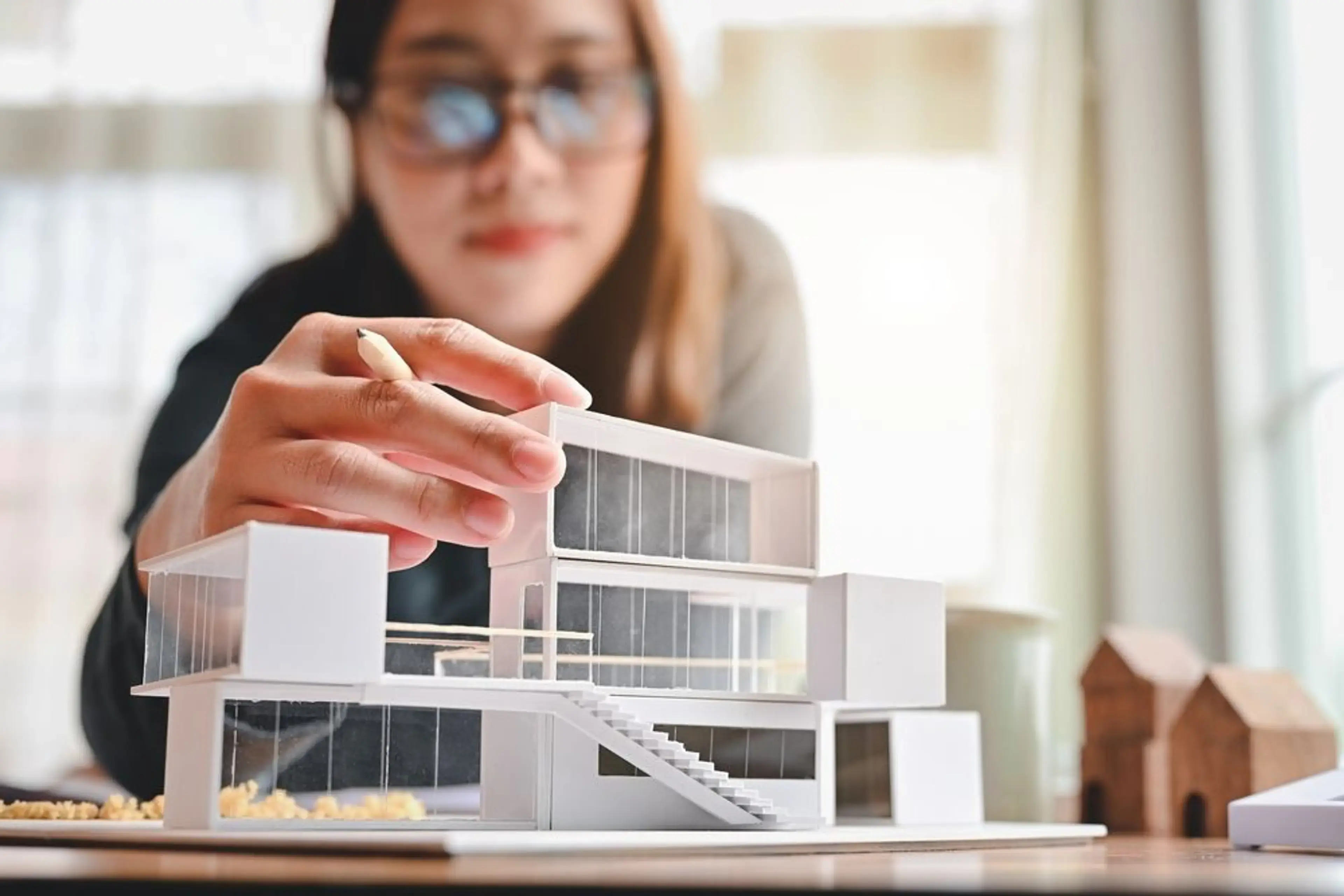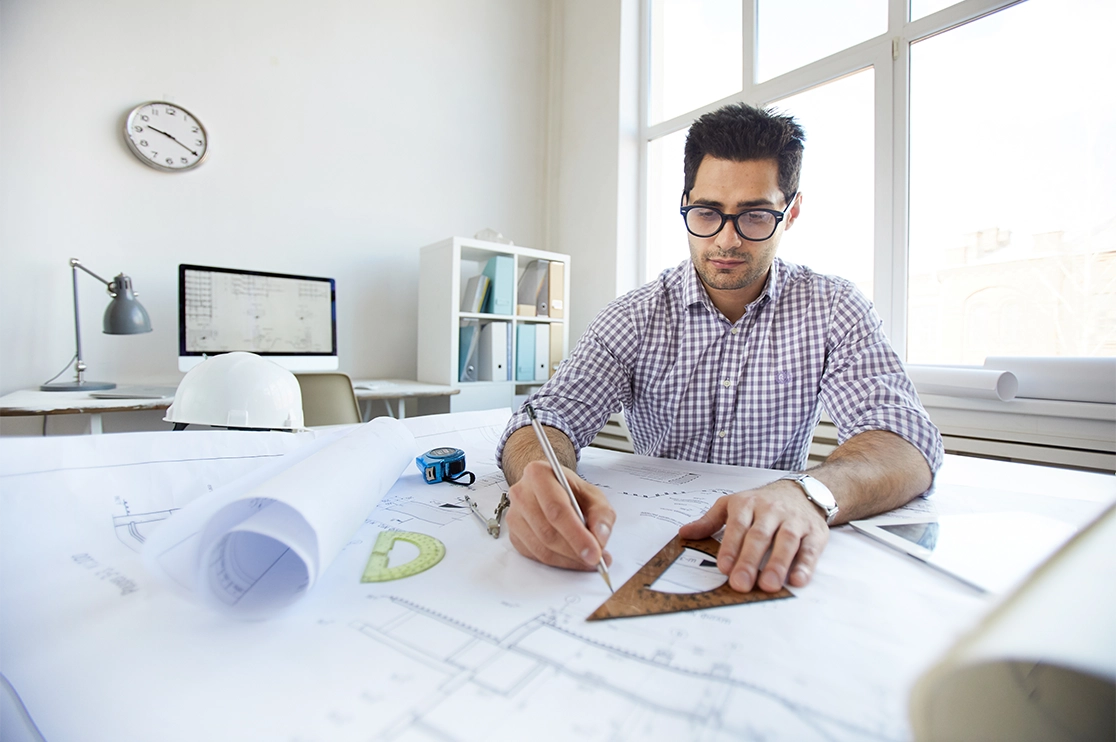Understanding the Diverse Occupation Paths Available for Aspiring Architect
As a hopeful Architect, you have a globe of job courses waiting on you. Each course uses one-of-a-kind obstacles and opportunities to apply your imagination and technological knowledge. Whether you're attracted to standard style or the subtleties of lasting style, there's a particular niche that aligns with your interests. Recognizing these diverse options can shape your expert trip, however which instructions will you select to explore first?
Standard Style: Designing Structures and structures
Conventional architecture concentrates on making buildings and structures that blend capability with aesthetic charm. As you discover this area, you'll value the complex balance in between type and function. You'll find out to attract ideas from historic styles, incorporating components like proportion, materials, and craftsmanship. Your layouts can mirror social heritage, showcasing regional traditions while satisfying modern demands.
You'll develop skills in drafting, model-making, and website evaluation, permitting you to visualize and communicate your ideas successfully. Involving with customers, you'll need to comprehend their vision and translate it into practical styles.
Moreover, constructing codes and sustainability techniques are vital in your work, guaranteeing your structures are secure and ecologically friendly. As you expand in your occupation, you'll find chances in property, business, or also reconstruction jobs, each offering one-of-a-kind difficulties. Welcoming conventional style leads the way for a satisfying career that pays tribute to the past while shaping the future.
Urban Planning: Shaping Neighborhoods and Public Spaces
As an aspiring Architect, you can play a necessary function as a city planner, transforming how areas operate and engage. By employing area interaction approaches, you'll ensure that residents have a voice fit their setting. Plus, incorporating sustainable layout concepts will certainly help produce spaces that not just meet today's needs but additionally safeguard the future.
Duty of Urban Planners
While lots of may consider engineers as the single dreamers behind structures, city organizers play an essential function fit the more comprehensive landscape of areas and public spaces. They assess land use, zoning regulations, and neighborhood requires to develop lasting settings that improve lifestyle. By collaborating with various stakeholders, you'll assist create parks, transportation systems, and suburbs that advertise social communication and ease of access. Urban coordinators likewise concentrate on ecological considerations, guaranteeing that advancements integrate environment-friendly spaces and support biodiversity. Your knowledge in spatial layout and area characteristics permits you to visualize future growth while maintaining cultural heritage. In this important role, you'll straight affect just how people experience their environments, making every job a chance for positive adjustment.
Neighborhood Engagement Techniques
Efficient area involvement strategies are important for metropolitan coordinators to ensure that the voices of residents are listened to and valued in the preparation process. To foster meaningful dialogue, you need to prioritize open discussion forums and workshops where area members can reveal their concepts and issues. Use surveys and social media sites to get to a wider audience, making sure diverse viewpoints are consisted of. Teaming up with neighborhood organizations can boost depend on and assist in deeper connections. It is necessary to supply clear details regarding decision-making procedures and suggested jobs, permitting residents to really feel informed and empowered. By proactively listening and integrating feedback, you'll develop spaces that show the area's requirements, inevitably causing even more successful and sustainable city environments. Accept openness and continual dialogue for long lasting influence.
Sustainable Style Principles
When designing city areas, integrating sustainable layout concepts is essential for creating atmospheres that prosper both environmentally and socially. Think about integrating eco-friendly spaces, like yards and parks, to enhance biodiversity and boost air quality.
Creating with water conservation in mind is also key-- consider rain yards and absorptive surfaces to handle stormwater. Including neighborhood members throughout the preparation process guarantees that the spaces you create satisfy their demands and encourage social interaction. By accepting these concepts, you'll add to vivid, sustainable city landscapes that profit every person.

Landscape Architecture: Creating Sustainable Outside Settings
As you explore landscape design, you'll uncover essential style principles that develop beautiful and practical exterior spaces. Lasting methods play a vital duty in ensuring these atmospheres prosper while minimizing environmental impact. And also, you'll discover a variety of profession chances that permit you to make a genuine distinction in just how people communicate with nature.
Design Concepts in Landscape
Recognizing design principles in landscape design is essential for developing lasting outside environments that balance with nature. You'll need to ponder aspects like proportion, equilibrium, and range to guarantee your styles really feel cohesive and welcoming. Integrating native plants not only boosts biodiversity but also minimizes water usage, making your landscape resistant. Consider the circulation of space and exactly how individuals communicate with it; paths and seating locations must welcome expedition and relaxation. Additionally, focus on seasonal adjustments, creating with materials that enhance the surroundings year-round (Architect). By prioritizing sustainability and appearances, you can produce outdoor spaces that enhance the area and promote health. Welcoming these principles will set a strong structure for your career in landscape style.
Lasting Practices Overview
Sustainable practices in landscape style not only focus on looks however likewise prioritize eco-friendly health and resource conservation. You can develop rooms that advertise dirt health and wellness, such as exercising and making use of natural products permaculture concepts. Eventually, these practices assure your layouts benefit both individuals and the environment for years to come.
Occupation Opportunities Expedition
With a strong foundation in sustainable techniques, landscape design uses a selection of profession courses that allow you to make a purposeful influence on the atmosphere. Urban organizers usually collaborate with landscape engineers to produce green rooms in urban setups, boosting city livability. If you're passionate concerning education and learning, take into consideration coming to be a landscape style educator, motivating future generations.
Sustainable Style: Concentrating On Eco-Friendly Practices
As you explore your occupation in design, welcoming eco-friendly techniques can set you apart in an affordable area. Lasting design concentrates on producing buildings that reduce ecological influence while boosting occupant health. By integrating sustainable products, energy-efficient systems, and sustainable building techniques, you'll add to a greener future.
Start by obtaining knowledge of eco-friendly qualifications like LEED or BREEAM, which can strengthen your credentials. Think about how natural light, air flow, and thermal effectiveness can enhance design. Collaborate with designers and environmental professionals to innovate remedies that minimize waste and conserve resources.
Don't neglect the significance of community involvement-- interesting neighborhood stakeholders can inspire layouts that harmonize with the environment. As customers progressively focus on sustainability, your know-how in green techniques will certainly not only draw in projects however additionally satisfy your interest for liable design. Accept this vital element of the career, and enjoy your career thrive.
Historic Preservation: Protecting and Bring Back Social Heritage
While you commence on your architectural journey, think about the important duty of historical preservation in maintaining our social heritage. This field concentrates on the security and repair of significant structures, websites, and structures that inform the tales of our past. By participating in historical look at these guys preservation, you'll assist protect the architectural tradition that shapes neighborhood identity.
As a historic preservation Architect, you'll analyze historical relevance and evaluate the condition of structures. You'll work carefully with historians and preservationists to assure authentic reconstruction techniques are used. This occupation path allows you to blend imagination with research study, enabling you to design options that respect initial materials and craftsmanship.
Your job not only adds to sustainability by reusing existing buildings however likewise fosters a sense of satisfaction within areas. Embracing this path will certainly help you become a websites guardian of background, preserving the tales and appearances that improve our lives.
Interior Architecture: Enhancing Indoor Spaces
Historical conservation and interior style both share a commitment to improving the developed atmosphere, however they concentrate on different facets. While historical preservation stresses preserving a structure's cultural and historic worth, indoor architecture zeroes in on optimizing interior spaces for capability and looks.
As an aspiring Architect, you'll find that indoor design permits you to blend creativity with technological abilities. You'll design spaces that not only look great however also advertise comfort and efficiency. This area entails recognizing just how light, shade, and products engage within an area, influencing mood and usability.
You'll service different projects, from household homes to business workplaces, making certain that each setting meets the needs of its occupants. By prioritizing user experience, you can transform insides right into practical and click over here motivating areas, making a considerable influence on just how people connect with their surroundings. Welcome the chance to improve indoor settings and shape the method people live and work.
Industrial Style: Merging Performance With Aesthetics
Industrial design plays an important function in producing items that seamlessly blend aesthetics with performance, ensuring that what you make use of everyday is not only aesthetically appealing but also functional. As an ambitious Architect, you might involve yourself in this area, focusing on making every little thing from furnishings to customer electronic devices. Your work includes comprehending customer requirements, materials, and making processes, enabling you to develop cutting-edge solutions that improve everyday experiences.
In commercial design, you'll commonly work together with designers, makers, and marketers, making certain that your styles are not just lovely yet additionally practical. This occupation path uses a dynamic environment where creativity meets functionality, making it a fulfilling choice for architects interested in shaping the products of tomorrow.
Frequently Asked Questions
What Educational Credentials Do I Required to Become an Architect?
To become an architect, you'll need an expert level in architecture, generally a Bachelor's or Master's. Furthermore, you'll have to complete a teaching fellowship and pass the Architect Enrollment Assessment to exercise lawfully.
Exist Certification Demands for Different Architectural Occupation Paths?
Yes, there're qualification needs for various architectural paths. Architect. You'll need to pass exams, total internships, and in some cases go after specialized training, depending on your chosen emphasis, like landscape style, metropolitan design, or historic preservation
What Software Abilities Are Crucial for Designers Today?

Just How Can I Gain Practical Experience While Examining Style?
You can acquire useful experience by interning at architectural companies, joining style competitors, volunteering for area tasks, or collaborating with schoolmates on real-world jobs. These chances improve your abilities and build beneficial connections in the industry.
What Job Opportunities Exist Outside Typical Style Firms?
You can explore various task opportunities outside traditional design firms, like city preparation, interior decoration, landscape architecture, construction administration, property advancement, or also duties in sustainability consulting. Each deals special challenges and benefits.
Whether you're attracted to conventional architecture or the nuances of lasting layout, there's a niche that lines up with your interests.When developing city spaces, integrating sustainable design concepts is critical for producing environments that flourish both environmentally and socially.As you explore landscape architecture, you'll uncover necessary layout concepts that produce lovely and useful outdoor rooms.Understanding style principles in landscape design is necessary for producing lasting outside settings that balance with nature.In industrial layout, you'll typically team up with makers, designers, and marketing professionals, making certain that your styles are not just stunning however likewise practical.
Comments on “Architect Insights on Balancing Form and Function”